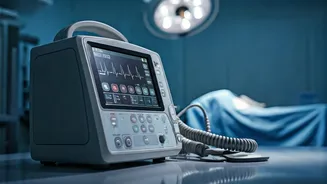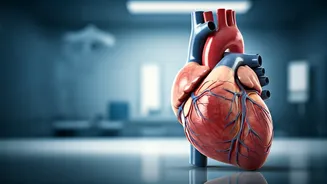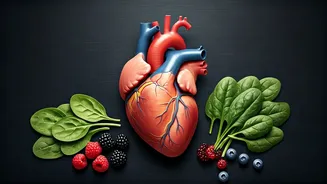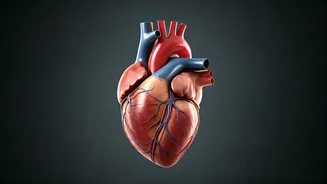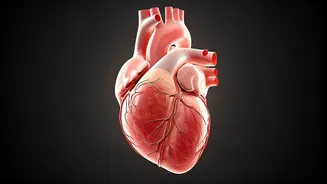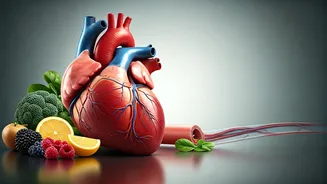Cardiac Arrest Explained
Cardiac arrest is a serious medical condition where the heart abruptly stops pumping blood effectively throughout the body. This life-threatening situation
occurs when the heart's electrical system malfunctions, leading to an irregular heartbeat or complete cessation of heart activity. Various factors, including underlying heart diseases, structural abnormalities, and electrical problems within the heart, can trigger cardiac arrest. Symptoms often appear suddenly and may include loss of consciousness, absence of a pulse, and cessation of breathing. Without immediate intervention, cardiac arrest can lead to brain damage and death within minutes. Therefore, prompt recognition of the symptoms and immediate medical intervention, such as cardiopulmonary resuscitation (CPR) and defibrillation, are crucial for survival.
Defibrillators: What They Are
A defibrillator is a medical device designed to deliver an electrical shock to the heart. This shock is intended to reset the heart's electrical activity and restore a normal rhythm. There are two main types of defibrillators: automated external defibrillators (AEDs), which are designed for use by non-medical personnel, and manual defibrillators, typically used by trained healthcare professionals. AEDs analyze the heart rhythm and determine if a shock is necessary, while manual defibrillators allow healthcare providers to assess and control the energy delivered. The device's primary function is to reverse potentially fatal arrhythmias such as ventricular fibrillation and pulseless ventricular tachycardia. Both types are essential in providing immediate care during a cardiac arrest.
How Defibrillators Function
Defibrillators function by delivering a controlled electrical shock to the heart through electrodes placed on the chest. The shock is carefully calibrated to disrupt the irregular electrical activity causing the cardiac arrest. In a defibrillator, the device assesses the patient’s heart rhythm; if it identifies a shockable rhythm, it prepares to deliver the electrical pulse. The energy is delivered, either manually by a healthcare professional or automatically by an AED. The goal is to depolarize all the heart cells simultaneously, allowing the heart's natural pacemaker to regain control and restore a normal rhythm. The effectiveness of the defibrillation depends on several factors, including the time it takes to deliver the shock after the onset of cardiac arrest.
Importance of Early Intervention
The time factor in cardiac arrest significantly affects the chances of survival. Early intervention, including CPR and defibrillation, dramatically increases survival rates. Each minute that passes without intervention reduces the chances of survival by about 7% to 10%. Administering CPR helps to circulate blood and oxygen to the brain and other vital organs until defibrillation can be performed. Defibrillation is most effective when it is done within the first few minutes of cardiac arrest. The quicker a shock can be delivered to the heart, the higher the chances of restoring a normal heart rhythm and saving the patient's life. This makes the prompt availability and proper use of defibrillators crucial in emergency situations.
Types of Defibrillators
There are primarily two main types of defibrillators: Automated External Defibrillators (AEDs) and manual defibrillators. AEDs are designed for use by non-medical personnel and provide step-by-step voice prompts to guide the user through the process. These devices analyze the patient's heart rhythm automatically and determine if a shock is necessary. Manual defibrillators are typically used by trained healthcare professionals and provide greater control over the energy delivered. Healthcare providers can monitor the heart rhythm, assess the patient's condition, and decide on the appropriate energy level for the shock. The selection of the type depends on the setting, the availability of trained medical staff, and the specific needs of the situation.
Where Defibrillators are Used
Defibrillators are employed in various settings where the risk of cardiac arrest is high or where rapid response is vital. They are commonly found in public places, such as airports, sports arenas, shopping malls, and community centers, making them accessible during emergencies. Healthcare facilities, including hospitals, clinics, and ambulances, are equipped with defibrillators as part of their standard medical equipment. Additionally, many workplaces, schools, and even private residences have defibrillators to ensure quick access to these life-saving devices. The widespread availability of AEDs helps to improve the likelihood of survival from cardiac arrest, as anyone can use them to administer a life-saving shock.
Training and Awareness
Training in CPR and the use of defibrillators is critical for saving lives during cardiac arrest. CPR training teaches individuals how to provide chest compressions and rescue breaths to maintain blood flow to the brain and other vital organs until professional medical help arrives. Defibrillator training focuses on the proper use of AEDs, including how to recognize the signs of cardiac arrest, how to apply the pads, and how to follow the device's voice prompts to deliver a shock. Regular CPR and defibrillator training courses are offered by various organizations, including the American Heart Association and the Indian Heart Association. This training equips individuals with the knowledge and skills necessary to respond effectively in an emergency and increase the chances of saving a life. Increased awareness about cardiac arrest, its symptoms, and the importance of early intervention can encourage more people to learn CPR and how to use a defibrillator.
